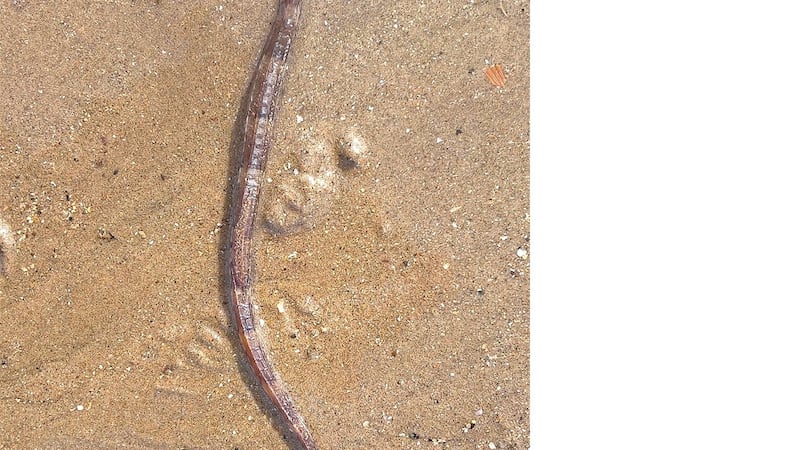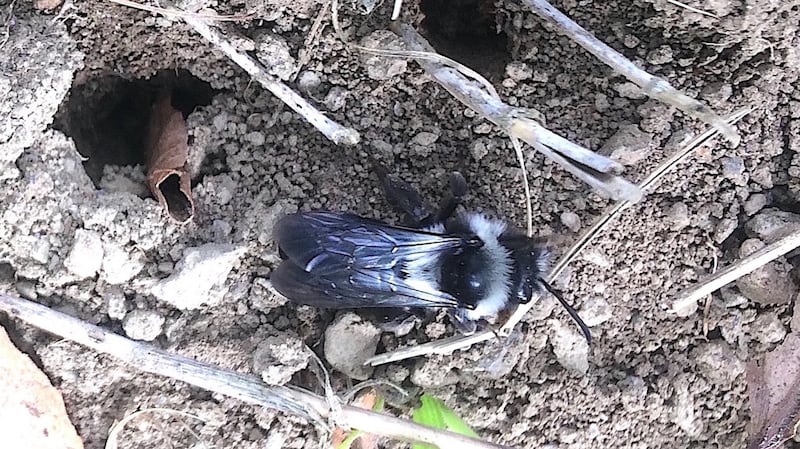Q. I spotted this butterfly at Mullaghmore in the Burren. It looked unusual.
David Williams, Oranmore, Galway.
A. That is a cinnabar moth. It lays its eggs on ragwort, the foodplant of the caterpillars.

Q. I found these translucent jelly-like objects stuck to a rock in a freshwater stream.
Patrick O’Donnell, Wicklow.
A. They are the eggs of a water snail.

Q. On holidays in Anderby Creek, Lincolnshire, we found this sea creature. It looked like a stick, but up close its head looked like a seahorse.
Mary Patterson, Foxford, Co Mayo.
A. It was the broad-nosed pipefish, same family as the seahorse.

Q. What are these insects buzzing around lots of holes in the ground into which they are flying?
Bob McDonagh, Jamestown, Co Wexford.
A. They are the ashy mining bee, Andrena cineraria, a solitary bee that nests in the ground.
Q. We had collared doves nesting in the clematis at the front of our house. The fledgling left the nest weeks ago, but there has been a dove in the nest again. How often do they incubate?
Angela Treacy, New Ross, Co Wexford.
A. The hen dove may be starting a second brood. They can rear two or even three broods in the season.
Q. I've been saving up to 100 oak seedlings from the lawnmower over several years. They have popped up in the deep bank of moss at the edges of the my very big lawn. There are quite a few oaks about half-a-mile from me.
Chris Normile, Tarbert, Co Kerry.
A. It is obviously some animal's cache. Squirrels bury acorns, and jays tend to hide them under leaf litter.
Ethna Viney welcomes observations and photographs at Thallabawn, Louisburgh, Co Mayo, F28F978, or by email at : viney@anu.ie. Please include a postal address.










